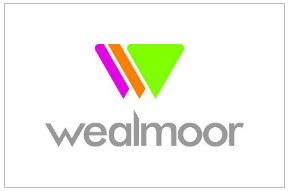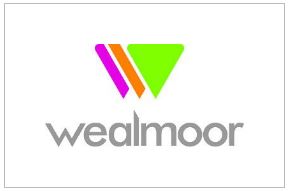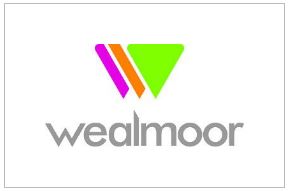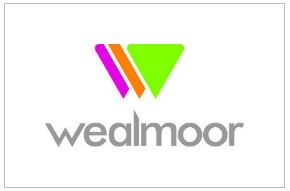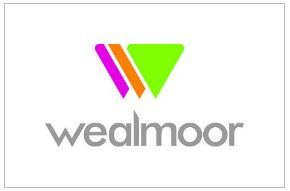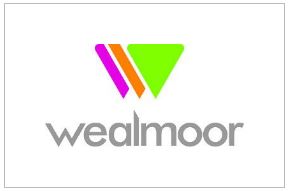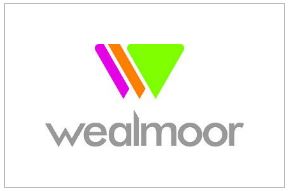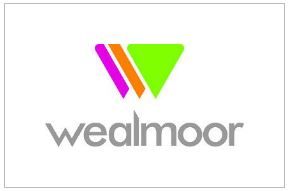Title Page
-
Conducted on
-
Prepared by
-
Location
3.1 Food Safety and Quality Manual
-
3.1 Food Safety and Quality Manual<br>Are the Site’s processes and procedures to meet the requirements of the BRC Standard to allow consistent application, facilitate training, and support due diligence documented?<br>
-
3.1.1 <br>Are the site’s documented procedures, working methods and practices collated in the form of a printed or electronic quality manual?<br><br>Are the documented policies, procedures and work instructions easily retrievable and available where and when needed?<br><br>Does the manual include an overview of how the company’s policies and procedures are organised (Quality Manual Index)?<br><br>Are all the policies and procedures used by site’s operations available and assessable by relevant staff<br><br>
-
3.1.2 Do key staff and staff that use documents as part of their role have access to up-to-date policies and procedures at all times and in the most appropriate format?<br><br>During the audit, which documented procedures (minimum 3) were evaluated against the actual practices on the site and were they followed correctly?<br>(Please include photos of the procedures)<br><br>
-
3.1.3 Are documented procedures and work instructions clearly legible, unambiguous and in English?<br><br>Are there adequate details on documented procedures with photographs, diagrams or other pictorial instructions where written communication is insufficient to enable their correct application by relevant staff?<br><br>Do staff using authorised document understand its relevance what it is for and how to use it? Please provide evidence of authorised document(s)
3.2 Document control
-
3.2.1 Does the site have a documented procedure that describes the method by which documents are controlled and managed?<br><br>Does the procedure include the following?<br><br>1. responsibilities for the management of the system<br>2. a list of all controlled documents indicating the latest version number<br>3. the method for the identification and authorisation of controlled documents<br>4. a record of the reason for any changes or amendments to documents<br>5. the system for the replacement of existing documents when these are updated<br><br>When documents are reviewed are the changes communicated to staff? <br><br>
3.3 Record completion and maintenance
-
3.3.1 Is there a suitable procedure in place for record completion and alteration e.g. neatly crossing through the ‘inaccurate’ information, noting the reason for the error and giving the initials of the person making the change)?<br><br>Are the teams aware that the use of correction fluid is unacceptable by the operators as this makes the initial information illegible?<br><br>Are the documents stored in electronic form, stored securely and backed up to prevent loss?<br><br>Are old records retrievable when required?<br><br>Are the records sampled during the audit legible and genuine; for example, they must be completed at the time of the checks (i.e. not before or after the event) and in an appropriate manner (e.g. using a pen, as pencil could be altered after the event)?<br><br>Are the sampled records appropriately authorised; this may include the initials or signature of the operator or supervisor verifying the records?<br>
-
3.3.2 As the site established retention time for records and procedures in place for appropriate handling, so that the records retained are in good condition for this period and are retrievable?<br><br>As a minimum, are the records retained for the shelf life of the product plus 12 months?<br><br><br><br>
3.4 Internal Audits
-
3.4.1 Is there an Internal audit programme, which primarily provide an ongoing assessment to ensure that the site is following the written procedures and methods of working defined in its quality system in place?<br><br>Does the Internal audit programmed have a defined and established scope, which ensures that all aspects of the food safety and quality system, including the HACCP programme, prerequisite programmes, ood defence and food fraud prevention plans, policies, documentation, hygiene and production, are audited at least annually?<br><br>Does the scope and consider a specific activity or section of the BRC Standard?<br><br>Is there a risk assessment in place to determine the frequency at which activities are audited against the BRC standard?<br>
-
3.4.2 Are the Internal audits carried out by appropriately trained, competent and independent auditors?<br><br>Can Internal auditors show via training records (clause 7.1.6) that they have received formal training on internal auditing, via either attendance at an external course or training within the company.<br><br>Does the training include auditing skills as well as relevant technical knowledge of the activity to be audited such as HACCP or appropriate product technical knowledge?<br>Does the training also cover the planning and scheduling of the internal audits, preparing audit reports in the company’s agreed format, the correct use of audit techniques (e.g. documentation and process auditing, audit trails and discussions with colleagues) and follow-up of audit findings (see clause 3.4.3)?<br><br><br>
-
3.4.3 Is the internal audit programme or schedule operational and fully implemented?<br><br>Are the internal audit reports documented and identify conformity as well as non-conformity including objective evidence of the findings?<br><br>Are the results of audits communicated to the relevant staff, and corrective actions and timescales agreed at the end of the audit?<br><br>Is the responsibility for the corrective actions documented?<br><br>Are the corrective actions and timescales for the implementation of agreed corrective action verified?<br><br>
-
3.4.4 Is there a programme of documented inspections to ensure that the factory environment and processing equipment are maintained in a suitable condition?<br><br>Does the inspection include<br><br>1. Hygiene inspections to assess cleaning and housekeeping performance<br>&<br>2. Fabrication inspections to identify risks to the product from the building or equipment<br><br>Is the frequency of inspection not less than once a month in open product areas?<br><br><br>
3.5 Supplier and raw material approval and performance monitoring
-
3.5 Supplier and raw material approval and performance monitoring<br><br>Are all materials brought onto the site to become part of the final product (including product packaging) sourced through approved suppliers and monitored?<br>Do the approval process and programme for monitoring raw materials consider the potential risk the material represents in terms of safety, authenticity, legality and quality?<br>Does the system consist of an initial approval process and an ongoing monitoring process?<br>Does the risk assessment process help to focus increased attention on the raw materials or suppliers that present a greater risk?<br>
-
3.5.1 Management of suppliers of raw materials and packaging
-
3.5.1.1 Has the company undertaken a documented risk assessment of each raw material or group of raw materials including packaging to identify potential risks to product safety, legality and quality?<br><br>Does the risk assessment take into account the potential for:<br>1. allergen contamination<br>2. foreign-body risks<br>3. microbiological contamination<br>4. chemical contamination<br>5. variety or species cross-contamination<br>6. substitution or fraud (see clause 5.4.2)<br>7. any risks associated with raw materials which are subject to legislative control.<br><br>Has the significance of raw material to the quality of the final product been considered?<br><br>Is the risk assessment the basis for the raw material acceptance and testing procedure and for the processes adopted for supplier approval and monitoring?<br><br>
-
3.5.1.2 Is there a documented supplier approval and monitoring procedure?<br><br>Does the system include the methods of approval, frequency of monitoring, responsibilities and how the process will be managed?<br><br><br>Is the supplier approval procedure based on risk and include either one or a combination<br><br>1. a valid certification to the applicable BRC Global Standard or GFSI-benchmarked standard<br><br>2. completed supplier questionnaire where a valid risk-based justification is provided and the supplier is assessed as low risk only<br><br>3. supplier audits,<br><br>During supplier audits does the audit scope include, product safety, traceability, HACCP review and good manufacturing practices, undertaken by an experienced and demonstrably competent product safety auditor?<br><br>Supplier questionnaire: Is there a valid risk-based justification provided for using questionnaire for supplier approval?<br><br>Does the scope of the questionnaire cover product safety, traceability, HACCP review and good manufacturing practices? <br>
-
3.5.1.3 Is there a documented fully implemented process for ongoing supplier performance review, based on risk and defined performance criteria? <br><br>Does the supplier performance criteria can be determined by the site and include <br>1. the risks associated with the raw material or supplier<br>2. incidences of contamination or non-conforming raw materials<br>3. quality of material supplied<br><br>Where supplier approvals were based on supplier questionnaires, have the questionnaires been reissued every 3 years?<br><br>Can the site demonstrate to an auditor that the monitoring and ongoing review it uses is appropriate, justified and risk-based?<br><br><br>
-
3.5.1.4 Does the company maintain an up-to-date list of approved suppliers based on the outcome of the supplier approval process?<br><br><br>Is the approved supplier list available where at intake, and be accessible to anyone who needs it at the points at which it should be used, for example, process leaders, QCs, and print room staff?<br><br>
-
3.5.1.5 Where raw materials (including primary packaging) are purchased from companies that are not the manufacturer, packer or consolidator (e.g. purchased from an agent, broker or wholesaler), the site shall know the identity of the last manufacturer or packer, or for bulk commodity products the consolidation place of the raw material.<br>Information to enable the approval of the manufacturer, packer or consolidator, as in clause 3.5.1.1., shall be obtained from the agent/broker or directly from the supplier, unless the agent/broker is themselves certificated to a BRC standard (e.g. BRC Global Standard for Agents and Brokers) or a standard benchmarked by GFSI.<br>
-
3.5.1.6 The procedures shall define how exceptions to the supplier approval processes in clause 3.5.1.2 are handled (e.g. where raw material suppliers are prescribed by a customer) or where information for effective supplier approval is not available (e.g. bulk agricultural commodity products) and instead product testing is used to verify product quality and safety.<br>When a site produces customer-branded product the customer shall be made aware of the relevant exceptions. <br>
3.5.2 Raw material and packaging acceptance, monitoring and management procedures
-
3.5.2.1 The company shall have a documented procedure for the acceptance of raw materials and packaging on receipt based upon the risk assessment (clause 3.5.1.1). Acceptance of raw materials (including primary packaging) and their release for use shall be based on one or a combination of:<br>- product sampling and testing<br>- visual inspection on receipt<br>- certificates of analysis (specific to the consignment)<br>- certificates of conformance.<br>A list of raw materials (including primary packaging) and the requirements to be met for acceptance shall be available. The parameters for acceptance and frequency of testing shall be clearly defined, implemented and reviewed.
-
3.5.2.2 Procedures shall be in place to ensure that approved changes to raw materials (including primary packaging) are communicated to goods receipt personnel and that only the correct version of the raw material is accepted. For example, when labels or printed packaging have been amended, only the correct version should be accepted and released into production.
-
3.5.2.3 Where the site is in receipt of live animals, there shall be an inspection by a suitably competent individual at large and post mortem to ensure that the animals are fit for human consumption.
3.5.3 Management of suppliers of services
-
3.5.3.1 There shall be a procedure for the approval and monitoring of suppliers of services. Such services shall include, as appropriate:<br>- pest control<br>- laundry services<br>- contracted cleaning<br>- contracted servicing and maintenance of equipment<br>- transport and distribution<br>- off-site storage of ingredients, packaging or products<br>- laboratory testing<br>- catering services<br>- waste management.<br>This approval and monitoring process shall be risk-based and take into consideration:<br>- risk to the safety and quality of products<br>- compliance with any specific legal requirements <br>- potential risks to the security of the product (i.e. risks identified on the vulnerability and food defence assessments).<br>
-
3.5.3.2 Contracts or formal agreements shall exist with the suppliers of services that clearly define service expectations and ensure potential food safety risks associated with the service have been addressed.<br> <br>
3.5.4 Management of outsourced processing
-
3.5.4.1 The company shall be able to demonstrate that where part of the production process or final packing is outsourced and undertaken off-site this has been declared to the brand owner and, where required, approval granted.
-
3.5.4.2 The company shall ensure that outsourced contractors are approved and monitored to ensure that they effectively manage risks to product safety and quality and are operating effective traceability processes. <br>The approval and monitoring procedure shall be based on risk and include either one or a combination of: <br>- a valid certification to the applicable BRC Global Standard or GFSI-benchmarked standard<br>or<br>- supplier audits, with a scope to include product safety, traceability, HACCP review and good manufacturing practices by an experienced and demonstrably competent product safety auditor. Where the audit is completed by a third party, the company shall be able to: <br> demonstrate the competency of the auditor <br> confirm that the scope of the audit includes product safety, traceability, HACCP review and good manufacturing practices <br> obtain and review a copy of the full audit report<br>There shall be a documented process for ongoing supplier performance review, based on risk and defined performance criteria. The process shall be fully implemented. Records of the review shall be kept.
-
3.5.4.3 Any outsourced processing or packing operations shall:<br>- be undertaken in accordance with established contracts which clearly define any processing and/or packing requirements and product specification<br>maintain product traceability.
-
3.5.4.4 The company shall establish inspection and test procedures for products where part of the processing or packing have been outsourced, including visual, chemical and/or microbiological testing. The frequency and methods shall dependent on risk assessment.
3.6 Specifications
-
-
3.6.1 Specifications for raw materials and packaging shall be adequate and accurate and ensure compliance with relevant safety and legislative requirements. The specifications shall include defined limits for relevant attributes of the material which may affect the quality or safety of the final products (e.g. chemical, microbiological or physical standards).<br><br>
-
3.6.2 Accurate, up-to-date specifications shall be available for all finished products. These may be in the form of a printed or electronic document or part of an online specification system. <br>They shall include key data to meet customer and legal requirements and assist the user in the safe usage of the product.<br> <br>
-
3.6.3 Where the company is manufacturing customer-branded products, it shall seek formal agreement of finished product specifications. Where specifications are not formally agreed then the company shall be able to demonstrate that it has taken steps to ensure formal agreement is in place.
-
3.6.4 Specifications review shall be sufficiently frequent to ensure data is current or at a minimum <br>every 3 years, taking into account product changes, suppliers or other risks.<br>Reviews and changes shall be documented. <br>
3.7 Corrective and preventive actions
-
3.7.1 The site shall have a documented procedure for handling and correcting failures identified in the food safety and quality system.
-
3.7.2 Where a non-conformity places the safety, legality or quality of products at risk this shall be<br>investigated and recorded including:<br>- clear documentation of the non-conformity<br>- assessment of consequences by a suitably competent and authorised person<br>- the action to address the immediate issue<br>- an appropriate timescale for correction<br>- the person responsible for correction<br>verification that the correction has been implemented and is effective<br>
-
3.7.3 The site shall have a procedure for the completion of root cause analysis. At a minimum a root cause analysis shall be used to implement ongoing improvements and to prevent recurrence of non-conformities when: <br>- analysis of non-conformities for trends shows there has been a significant increase in a type of non-conformity <br>a non-conformity places the safety, legality or quality of a product at risk<br>
3.8 Control of non-conforming product
-
3.8.1 There shall be documented procedures for managing non-conforming products. These procedures shall include:<br>- the requirement for staff to identify and report a potentially non-conforming product<br>- clear identification of a non-conforming product (e.g. direct labelling or the use of IT systems)<br>- secure storage to prevent accidental release (e.g. physical or computer-based isolation)<br>- referral to the brand owner where required<br>- defined responsibilities for decision making on the use or disposal of products appropriate to the issue (e.g. destruction, reworking, downgrading to an alternative label or acceptance by concession)<br>- records of the decision on the use or disposal of the product<br>records of destruction where a product is destroyed for food safety reasons.<br>
3.9 Traceability
-
3.9.1 The site shall have a documented traceability procedure designed to maintain traceability throughout the site’s processes. At a minimum this shall include: <br>- how the traceability system works<br>- the labelling and records required<br>
-
3.9.2 Identification of raw materials (including primary packaging), intermediate/semi-processed products, part-used materials, finished products and materials pending investigation shall be adequate to ensure traceability.
-
3.9.3 The site shall test the traceability system across the range of product groups to ensure traceability can be determined from raw material including primary packaging to finished product and vice versa, including quantity check/mass balance.<br>The traceability test shall include a summary of the documents that should be referenced during the test, and clearly show the links between them. The test shall occur at a predetermined frequency, as a minimum annually, and results shall be retained for inspection. Traceability should be achievable within 4 hours<br>
-
3.9.4 Where rework or any reworking operation is performed, traceability shall be maintained.
3.10 Complaint handling
-
3.10.1 All complaints shall be recorded, investigated and the results of the investigation of the issue recorded where sufficient information is provided. Actions appropriate to the seriousness and frequency of the problems identified shall be carried out promptly and effectively by appropriately trained staff.
-
3.10.2 Complaint data shall be analysed for significant trends. Where there has been a significant increase in a complaint or a serious complaint, root cause analysis shall be used to implement ongoing improvements to product safety, legality and quality, and to avoid recurrence. This analysis shall be made available to relevant staff.
3.11 Management of incidents, product withdrawal and product recall
-
3.11.1 The company shall have procedures designed to report and effectively manage incidents<br>and potential emergency situations that impact food safety, legality or quality. This shall include consideration of contingency plans to maintain product safety, quality and legality. Incidents may include:<br>- disruption to key services such as water, energy, transport, refrigeration processes, staff availability and communications<br>- events such as fire, flood or natural disaster<br>- malicious contamination or sabotage<br>- failure of, or attacks against, digital cyber-security<br>Where products which have been released from the site may be affected by an incident, consideration shall be given to the need to withdraw or recall products.
-
3.11.2 The company shall have a documented product withdrawal and recall procedure. This shall include as a minimum:<br>- identification of key personnel constituting the recall management team, with clearly identified responsibilities<br>- guidelines for deciding whether a product needs to be recalled or withdrawn and the records to be maintained<br>- an up-to-date list of key contacts (including out-of-hours contact details) or reference to the location of such a list (e.g. recall management team, emergency services, suppliers, customers, certification body, regulatory authority)<br>- a communication plan including the provision of information to customers, consumers and regulatory authorities in a timely manner<br>- details of external agencies providing advice and support as necessary (e.g. specialist laboratories, regulatory authority and legal expertise)<br>- a plan to handle the logistics of product traceability, recovery or disposal of affected product, and stock reconciliation. <br>- A plan to record timings of key activities<br>- A plan to conduct root cause analysis and to implement ongoing improvements, to avoid recurrence<br>The procedure shall be capable of being operated at any time.<br>
-
3.11.3 The product recall and withdrawal procedures shall be tested, at least annually, in a way that ensures their effective operation. Results of the test shall be retained and shall include timings of key activities. The results of the test and of any actual recall shall be used to review the procedure and implement improvements as necessary.
-
3.11.4 In the event of a significant food safety incident, including a product recall or regulatory food safety non-conformity (e.g. a regulatory enforcement notice) the certification body issuing the current certificate for the site against this Standard shall be informed within 3 working days.
